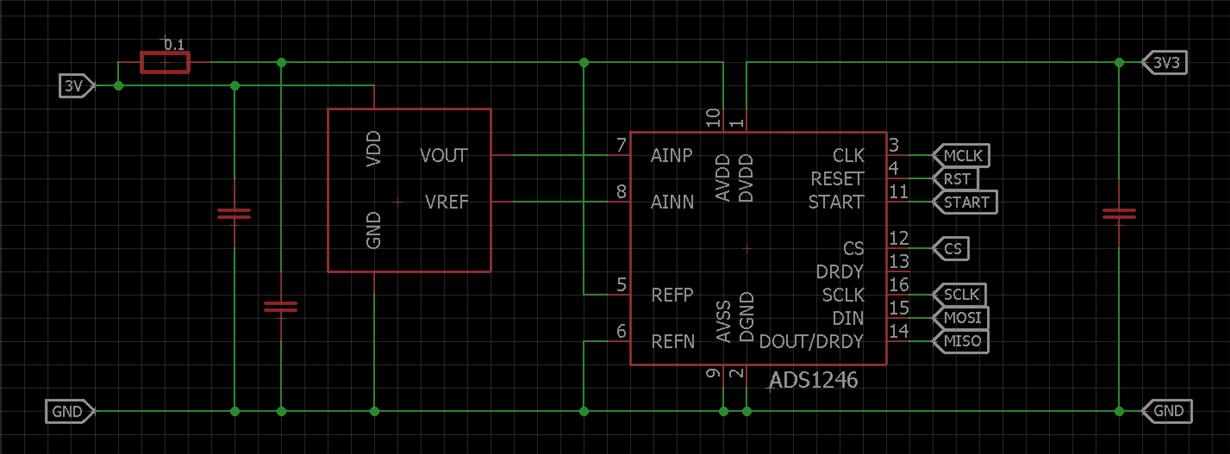Other Parts Discussed in Thread: ADS1247, ADS1248
Hello,
For conception choices, we use 6 * ADS1246 in our system in parallel.
From time to time, with no corelation on a particular system over arround 500 units, it seems than after running fine for few days in a row, an offset of 5 to 10 mV appears.
This offset vanish only with a full restart of the system. (power cycle on/off/on + init of the ADCs registers)
The sensor in front af the ADC has a 200/300 ohm output impedance and is measured trough a diff AINP(~1.5V) - AINN(=1.5V).
We though about other error possibilities, and one of our concern is about a current bias from the ADC excitation current sources to the sensor.
First question :
Is there a difference with the die inside an ADS1246 package regarding the die inside ADS1247/48?
Second question :
If not, is there a possibility that a register IDAC1 badly initiated (normaly not present in ADS1246) can result in a current leakage inside our sensor ?
Thanks for your time and help.


